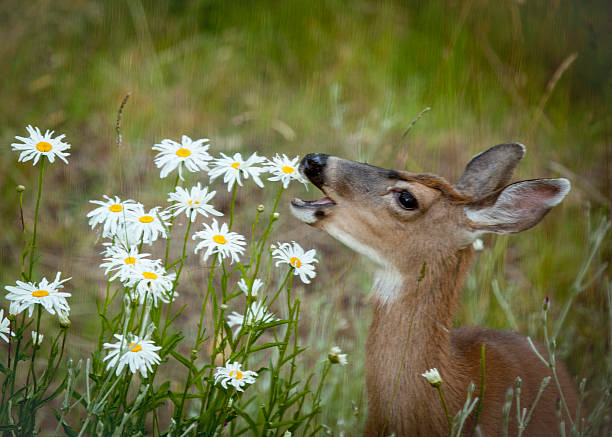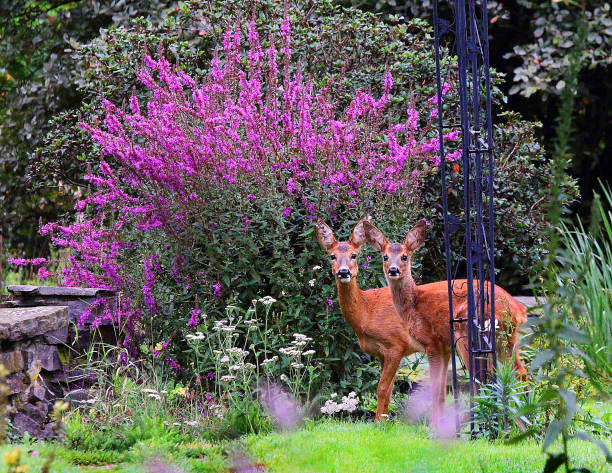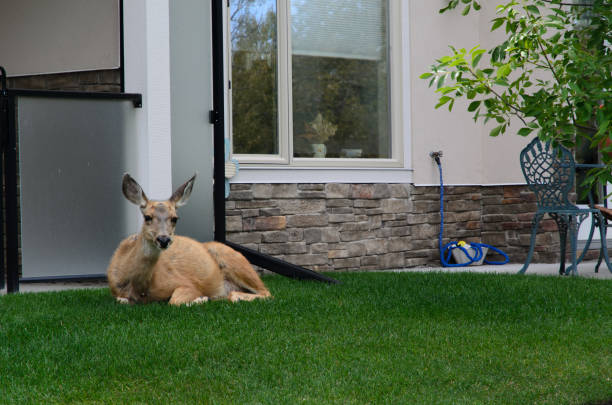Deer-Proofing Your Garden: Discover practical strategies to shield your plants from hungry deer. From choosing deer-resistant plants to employing physical barriers and repellents, this article offers essential tips to help you safeguard your garden against deer damage.
Watching freshly planted plants devoured by deer can be an incredibly frustrating experience for gardeners. After carefully selecting the perfect plants, preparing the soil, and tenderly nurturing seedlings, seeing them vanish overnight due to deer browsing can be disheartening.

The excitement and anticipation of watching new growth emerge are quickly replaced by disappointment and a sense of helplessness as the fruits of one’s labor are consumed before they have a chance to thrive.
The frustration intensifies as gardeners realize the effort and resources invested in their garden projects. From purchasing plants and seeds to dedicating time and energy to planting and caring for them, the sight of deer casually munching away at the fruits of your labor can feel like a significant setback. It’s not just the loss of plants that stings but also the wasted time and resources that went into nurturing them, making the experience all the more exasperating.
Seeing freshly planted plants eaten by deer can trigger a sense of powerlessness in gardeners. Despite implementing various protective measures and investing in deterrents, deer seem to find a way to access the garden and wreak havoc. The feeling of being outwitted by these persistent creatures can lead to frustration and resignation, leaving gardeners grappling with the challenge of finding practical solutions to protect their plants and preserve the beauty of their gardens.

If you’re tired of waking up to find your flowers and vegetables nibbled to the ground, it’s time to take action. Here are some of the best ways to protect your plants against deer:
1) Choose Deer-Resistant Plants:
One of the most straightforward strategies is to select plants that deer tend to avoid. While no plant is entirely deer-proof, deer find many species less appealing due to their scent, taste, or texture. Examples include lavender, marigolds, daffodils, and ornamental grasses. By incorporating these plants into your garden, you can reduce the attractiveness of your garden to deer.
2) Create Physical Barriers:
Installing physical barriers is an effective way to keep deer away from your plants. Fences of wire mesh or deer netting should be at least 8 feet tall to prevent deer from jumping over them. Alternatively, consider surrounding individual plants or small garden beds with chicken wire or hardware cloth. Make sure to bury the fencing at least a foot deep to deter deer from digging underneath.

3) Use Repellents:
There are various commercial repellents available that can deter deer through taste, smell, or both. These repellents often contain garlic, sulfur, or predator urine ingredients. Spray repellents on plants according to the manufacturer’s instructions and reapply after rain or watering. Homemade repellents made from ingredients like hot pepper spray or soap solutions can also be effective and are more environmentally friendly.
4) Employ Scare Tactics:
Scare tactics can startle deer and discourage them from returning to your garden. Motion-activated sprinklers, ultrasonic devices, and flashing lights are scare devices that can help keep deer at bay. However, deer can become accustomed to these tactics over time, so it’s essential to change their placement or use multiple methods simultaneously periodically.
5) Plant Strategically:
Consider the layout of your garden when planting. Place deer-resistant plants closer to the perimeter or where deer are less likely to roam. Surround more desirable plants with those deer tend to avoid, creating a buffer zone that can help protect your prized specimens.

6) Maintain a Tidy Garden:
Deer are attracted to gardens with lush vegetation and easy access to food. Keep your garden neat by removing fallen fruits, trimming overgrown vegetation, and cleaning up debris regularly. Additionally, consider removing water sources, such as birdbaths or ponds, which can attract deer to your property.
7) Rotate Repellents:
Rotate between different repellents periodically to prevent deer from becoming accustomed to a particular scent or taste. Alternating commercial repellents and homemade solutions can help maintain their effectiveness over time.
8) Monitor and Adapt:
Regularly inspect your garden for signs of deer activity and adjust your protection strategies as needed. Keep an eye out for tracks, droppings, and evidence of browsing. If you notice deer still finding ways to access your plants, consider reinforcing fences, experimenting with new repellents, or adding additional scare devices.
Conclusion:
Protecting your plants from deer requires planning, persistence, and creativity. By incorporating various strategies such as selecting deer-resistant plants, installing physical barriers, using repellents, employing scare tactics, planting strategically, maintaining a tidy garden, rotating repellents, and monitoring your garden closely, you can significantly reduce the likelihood of deer damage. With dedication and a proactive approach, you can enjoy the beauty of your garden without worrying about unwelcome visitors munching on your prized plants.
